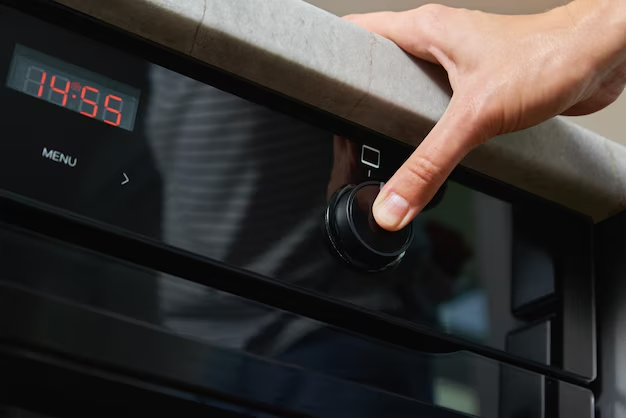What Temperature Should a Refrigerator Really Be?
When it comes to the modern kitchen, the refrigerator plays a crucial role by keeping our foods fresh and beverages chilled. Yet, many of us rarely ponder the optimal temperature it should maintain. How cold does a refrigerator get, and what are the best settings? Understanding these aspects can both improve food storage and enhance energy efficiency. Dive into the fascinating world of refrigerator temperatures and discover the perfect settings for your appliance.
The Ideal Temperature Zone for Your Refrigerator
The general consensus for the optimal refrigerator temperature is between 35°F and 38°F (1.67°C to 3.33°C). Storing food within this range ensures that it stays fresh while minimizing the risk of unwanted bacterial growth.
Why Not Colder?
While setting your refrigerator below 35°F might seem like a good idea to maximize freshness, it can lead to unwanted complications. Foods such as fruits and certain vegetables can become damaged by extremely cold temperatures. Additionally, if temperatures drop below 32°F, you risk freezer burn or frost damage to certain items.
Understanding the Temperature Zones
Refrigerators often have varying temperature zones that affect how and where you store your food:
- Coldest Region: Typically located near the back or lowest shelf, this is ideal for storing delicate meats and dairy products.
- Moderate Zone: Usually the middle shelves, suitable for leftovers and ready-to-eat foods.
- Door Storage: The warmest part due to frequent opening; perfect for condiments or sealed beverages.
Factors Influencing Internal Temperature
Several variables can affect how cold your refrigerator stays:
Door Usage
Every opening allows warm air to enter. If doors are frequently opened or left ajar, the internal temperature can rise, compromising the freshness of your food. Make it a habit to ensure the door is sealed tightly after each use.
Load Levels
Overfilled refrigerators can impede airflow, preventing consistent cooling. Conversely, a sparsely packed fridge can lead to energy inefficiency, as it will need extra energy to cool the open spaces.
Setting Your Refrigerator: A Simple Guide
To get the most out of your refrigerator, consider these practical tips:
- Use a Refrigerator Thermometer: While many fridges have built-in thermostats, their accuracy may vary. A standalone thermometer can give a more precise reading.
- Adjust Seasonally: External temperatures can influence your fridge’s performance. During hotter months, you may need to slightly reduce the temperature settings to compensate.
- Regular Defrosting: For models with a manual defrost feature, ensure you defrost regularly to maintain efficiency. Frost buildup can hinder cooling.
- Check Seals and Insulation: Over time, door seals can wear out, letting cold air escape. Regularly inspect and replace them when necessary to maintain efficiency.
Smart Fridges and Digital Controls
Modern refrigerators often come equipped with digital controls, allowing precise temperature settings. Some even connect to smart home systems or offer apps that monitor temperatures remotely. Familiarize yourself with your model’s manual to make the most of these advanced features.
Common Refrigerator Mistakes
Ensuring your refrigerator operates efficiently avoids common pitfalls:
Storing Hot Items: Always allow foods to cool to room temperature before refrigerating. Introducing hot items can raise overall temperatures and lead to condensation, which fosters bacterial growth.
Neglecting the Drip Pan: Some models collect condensation in a tray or drip pan. Regularly empty and clean it to prevent mold and unpleasant odors.
Ignoring the Freezer: Ensure your freezer is also set to its optimal temperature, generally around 0°F (-18°C), as this impacts the fridge's overall performance.
Tips for Preserving Food Quality
To get the most out of your refrigerator and prolong your food’s freshness, consider these practical tips:
- Organize Efficiently: Keep raw meats on the lowest shelf to prevent drips contaminating other foods.
- Use Airtight Containers: Storing leftovers in airtight containers can help maintain flavor and prevent odors.
- First In, First Out: Adopt this method by placing newly purchased items behind older ones, ensuring nothing gets left past its safe consumption date.
📝 Quick Summary
Here are key takeaways and actionable steps to maintain your refrigerator's efficiency and ensure food safety:
- 🌡️ Temperature Settings: Keep settings between 35°F-38°F (1.67°C-3.33°C) for optimal food preservation.
- 🚪 Minimize Door Openings: Reducing how often—and how long—the doors are open helps retain stable temperatures.
- 📏 Don't Overstuff: Avoid overloading your refrigerator to ensure proper air circulation.
- 🛠️ Regular Maintenance: Clean and check seals, and use a thermometer to monitor temperature.
- 🔄 Adapt to Seasons: Adjust settings based on external weather conditions.
Conclusion: Keep Cool and Carry On
Understanding how cold a refrigerator should get and adjusting your settings accordingly is an essential step in maintaining both the longevity of your appliance and the quality of your food. As technology evolves, staying informed about your refrigerator's capabilities can lead to more energy-efficient practices and healthier food storage habits. Embrace these insights and transform your approach to keeping cool.
